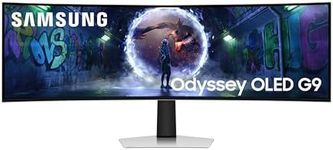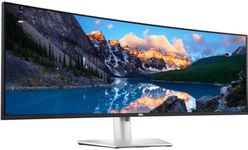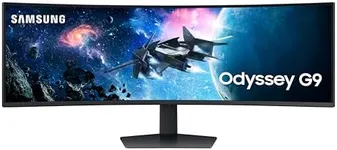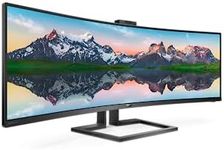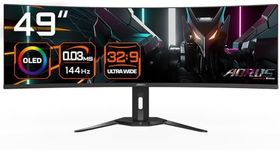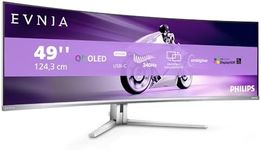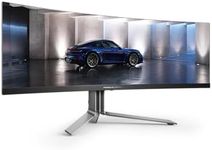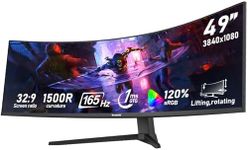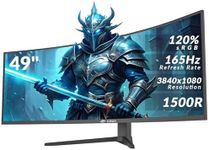Buying Guide for the Best 49 Inch Monitor
Choosing a 49-inch monitor can significantly enhance your productivity, gaming, or entertainment experience. These ultra-wide monitors offer a vast amount of screen real estate, which can be particularly beneficial for multitasking, immersive gaming, or watching movies. When selecting a 49-inch monitor, it's important to consider several key specifications that will impact your overall experience. Understanding these specs will help you make an informed decision that aligns with your specific needs and preferences.ResolutionResolution refers to the number of pixels that make up the display on the monitor. It is important because it determines the clarity and detail of the images displayed. For a 49-inch monitor, a higher resolution like 5120x1440 (often referred to as Dual QHD) is ideal for sharp and detailed visuals, especially if you plan to use the monitor for professional work or gaming. If you're using the monitor for general tasks or entertainment, a lower resolution might suffice, but keep in mind that lower resolutions can result in less sharp images on such a large screen.
Refresh RateThe refresh rate is the number of times the monitor updates with new information per second, measured in hertz (Hz). This is crucial for smooth motion display, especially in gaming or video playback. For a 49-inch monitor, a refresh rate of 60Hz is standard for general use, but if you're a gamer, you might want to look for a monitor with a refresh rate of 120Hz or higher to ensure smoother gameplay. Consider your primary use: if you're into fast-paced gaming, a higher refresh rate is beneficial; for office work or casual use, 60Hz is typically sufficient.
Panel TypePanel type affects the color accuracy, viewing angles, and response time of the monitor. Common types include IPS, VA, and TN. IPS panels offer the best color accuracy and viewing angles, making them ideal for creative work. VA panels provide better contrast and are good for watching movies. TN panels have the fastest response times, which can be beneficial for competitive gaming. Choose a panel type based on your primary use: IPS for color work, VA for media consumption, and TN for fast-paced gaming.
ConnectivityConnectivity options determine how you can connect your monitor to other devices. Important ports include HDMI, DisplayPort, USB-C, and sometimes Thunderbolt. For a 49-inch monitor, having multiple connectivity options is beneficial if you plan to connect multiple devices like a PC, gaming console, or laptop. Consider what devices you will be connecting and ensure the monitor has the necessary ports. USB-C or Thunderbolt can be particularly useful for modern laptops and devices that support these connections.
CurvatureCurvature refers to the curve of the monitor screen, measured in radius (e.g., 1800R). A curved screen can provide a more immersive experience by wrapping the display around your field of view, which is particularly beneficial for gaming and watching movies. For a 49-inch monitor, a curvature can help reduce eye strain and provide a more natural viewing experience. If you plan to use the monitor for immersive activities, a curved screen might be preferable. However, for tasks like graphic design, a flat screen might be more suitable for accuracy.
